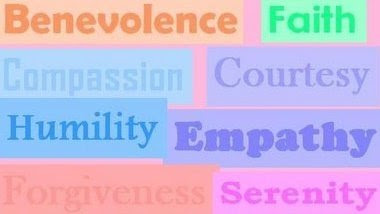 [READ: Why-JAVA][Start-Learning-JAVA][Why-Java's-Hot][Start-Using-LINUX][Java-Q-&-A][Question][Java-SE-6-Doc][Struts-Doc][Java-Tutorial-Index] [Java-Certification]
[READ: Why-JAVA][Start-Learning-JAVA][Why-Java's-Hot][Start-Using-LINUX][Java-Q-&-A][Question][Java-SE-6-Doc][Struts-Doc][Java-Tutorial-Index] [Java-Certification][Tech.][Struts.][Servlet.][JSP.][EJB.][JNDI-JMS][SQL.][JDBC.]
CORE-JAVA: [OOP][CLASS][ABSTRACT][EXCEPTIONS][THREADS][UTILS][PACKAGES][JVM][CASTING][NETWORKING][RMI-XML]
Nuts-N-Bolts. Tutorial.
Compile Java code online over the web: Remote compiling service.
What are the four corner stones of OOP ? (oop) (java-OOP) (Oop-Concept)
Abstraction, Encapsulation, Polymorphism and Inheritance.
What are the advantages of OOPL? (OOP)
Object oriented programming languages directly represent the real life objects. The features of OOPL as inheritance, polymorphism, encapsulation makes it powerful.
What do we mean by polymorphism, inheritance, encapsulation? (OOP)
Polymorphism: is a feature of OOPL that at run time depending upon the type of object the appropriate method is called.
Inheritance: is a feature of OOPL that represents the "is a" relationship between different objects(classes). Say in real life a manager is a employee. So in OOPL manger class is inherited from the employee class.
Encapsulation: is a feature of OOPL that is used to hide the information.
What do you mean by virtual methods in C++? (virtual)
virtual methods are used to accomplish the polymorphism in C++. Say class A is inherited from class B. If we declare say function f() as virtual in class B and override the same function in class A then at runtime appropriate method of the class will be called depending upon the type of the object.
What are some alternatives to inheritance? (oop)
A: Delegation is an alternative to inheritance. Delegation means that you include an instance of another class as an instance variable, and forward messages to the instance. It is often safer than inheritance because it forces you to think about each message you forward, because the instance is of a known class, rather than a new class, and because it doesn't force you to accept all the methods of the super class: you can provide only the methods that really make sense. On the other hand, it makes you write more code, and it is harder to re-use (because it is not a subclass).
Why Java does not support multiple inheritance? (oop)
A: Java DOES support multiple inheritance via interface implementation.
What do you mean by multiple inheritance in C++? (oop)
Multiple inheritance is a feature in C++ by which one class can be of different types. Say class teachingAssistant is inherited from two classes say teacher and Student.
Can you write Java code for declaration of multiple inheritance in Java ? (oop)
Class C extends A implements B { }
Difference Between Abstraction and Encapsulation. (oop)
Abstraction is removing some distinctions between objects, so as to show their commonalities.
Encapsulation is hiding the details of the implementation of an object so that there are no external dependencies on the particular implementation.
*[ Liberate the Sole.][The Qualities of Vaishnava.][Sanskrit Peace Translations.][The path of victory.]
*[ Significance of Nava-ratna (Nava-Graha).] [Amazing Constructive Vibrations.][Things become inevitable!]
Realizations. Realizations In Real Life. Amazing Constructive Vibrations. Astrology. Creating Leaders. How ideas are concluded and decisions are materialized. Relationships & Partnerships. The path of victory. An attempt for definition. Speak with a heart. These are contagious. Happy kingdom. MIRACLES. Better to create one ! Cast, God and religion ! Things become inevitable ! We are all looking for! Phase of Life. Destiny, Karma and God. Struggle, perfection and Money. Independence and Freedom. Relationships and Happiness.


